Top 5 Ways to Use Nutritional Yeast

There’s a lot to love about “nooch”—the affectionate term for nutritional yeast, the plant-based essential that adds savory flavor and a nutritious kick to your favorite recipes. If it’s not already a go-to ingredient in your kitchen, consider bringing this vegan staple with its signature burst of umami flavor into your culinary world.
What Is It?
Flaky, golden nutritional yeast is derived from baker’s and brewer’s yeast, but instead of using it to make leavened foods, like pizza and bread—heat during processing inactivates its leavening activity—nutritional yeast is processed into a beneficial meal enhancer packed with a powerful punch of nutrients.

How Is It Produced?
To produce nutritional yeast, S. cerevisiae (a type of yeast) cells are grown alongside a growing medium that is high in sugar, such as molasses. Once the yeast is mature, it is heated up to deactivate the yeast (which inhibits its leavening properties), then it is washed and dried into ready-to-eat flakes.
What are the Health Benefits?
Nutritional yeast won’t make your bread rise, but it can up your nutrient intake—the B vitamins, in particular! Plus, it tastes like cheese, so it’s the perfect plant-based flavor seasoning for those craving that savory flavor, without the saturated fat or sodium. It is excellent for vegans and vegetarians and those who want to increase their vitamin B intake through diet, rather than supplements.
A two-tablespoon serving of nutritional yeast contains all eight of the B vitamins and well over 100% of the recommended daily value (DV) of five (thiamin, riboflavin, niacin, vitamin B6, vitamin B12) of them. Especially notable is that it’s an excellent source of vitamin B12, which is only available naturally from animal sources, making it especially useful for vegans and vegetarians, who are otherwise unable to acquire this B vitamin in their diets from foods sources. Nutritional yeast packs 130% of the B vitamin folate, which is crucial during pregnancy to prevent neural tube defects, into that same single serving. Vitamin B12 and folate are also important in blood cell proliferation and development, which helps prevent anemia. Overall, the B vitamins are involved in numerous metabolic and neurological functions throughout the body, including the breakdown of macronutrients into energy, metabolizing amino acids, and maintaining healthy nerve cells. A lack of B vitamins can lead to mood instability and depression.
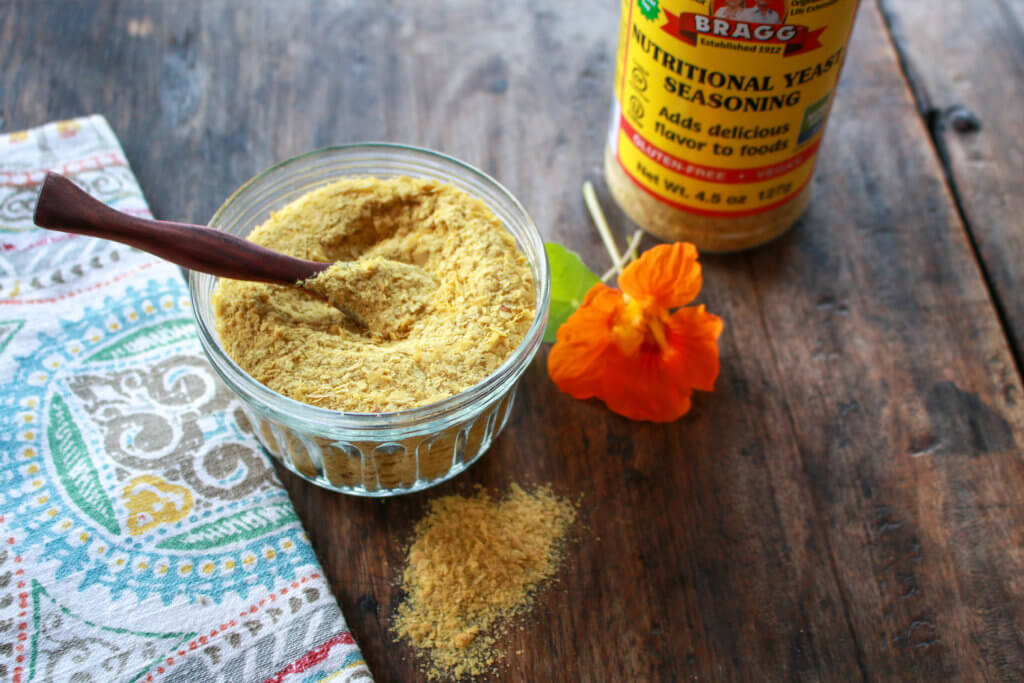
Nutritional yeast is also a good source of dietary fiber, protein, and zinc. A single two-tablespoon serving contains 4 grams (16% DV) of dietary fiber, which has been shown to lower cholesterol and help maintain healthy blood sugar levels, especially valuable for people at risk for or who have diabetes. That same serving packs 8 grams of filling protein (16% DV), important for maintaining and building muscle, and 20% DV of immunity-protecting zinc.
Top 5 Ways to Use Nutritional Yeast
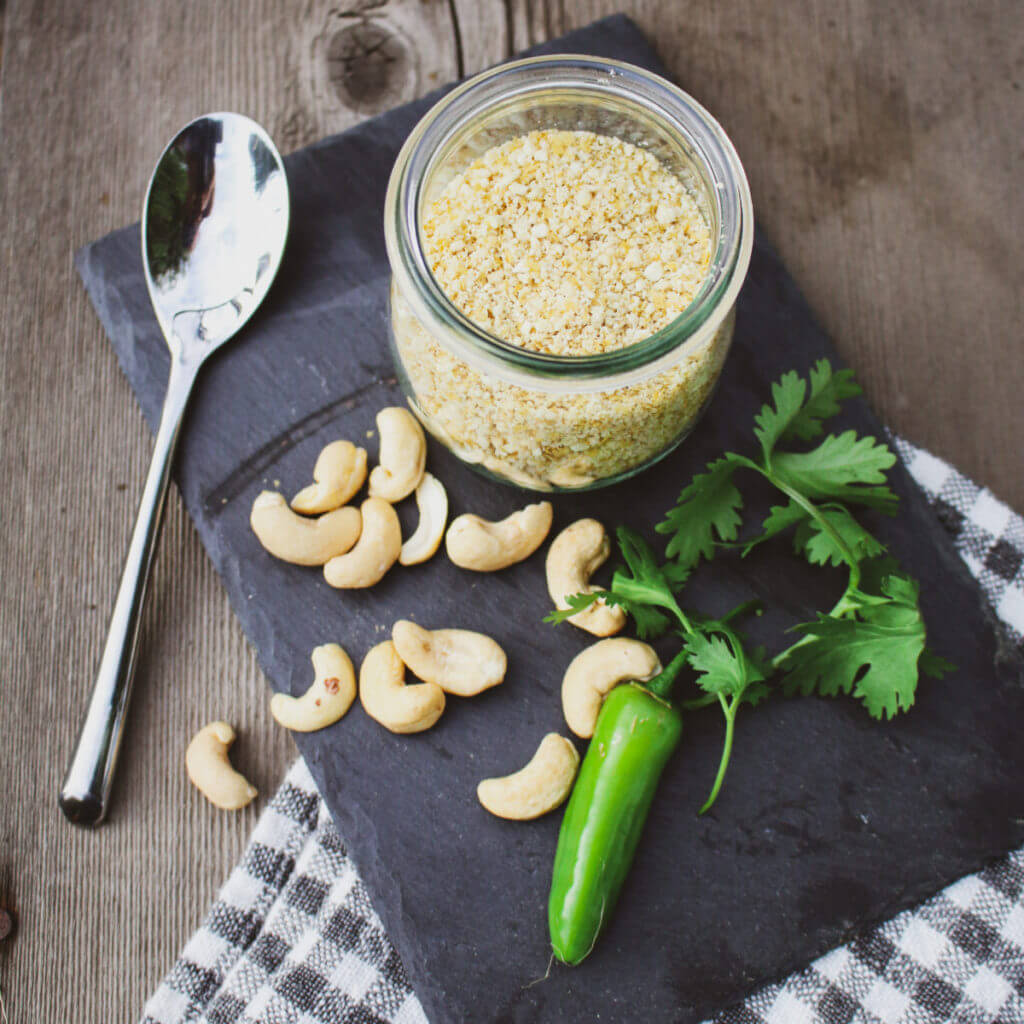
1. Make Plant-Based Cheese! Blend up your very own homemade batch of plant-based cheese in mere minutes with nutritional yeast and just two more ingredients. In a blender or food processor, add a cup of raw cashews, 2 tablespoons of nutritional yeast, and salt to taste, if you choose. Grind until it has the texture of Parmesan cheese and that’s it. Store in a glass jar and refrigerate up to 3 months. Get your cheese on by sprinkling it on favorites like popcorn, pizza, pasta, or anything calling out for that to-die-for umami flavor.
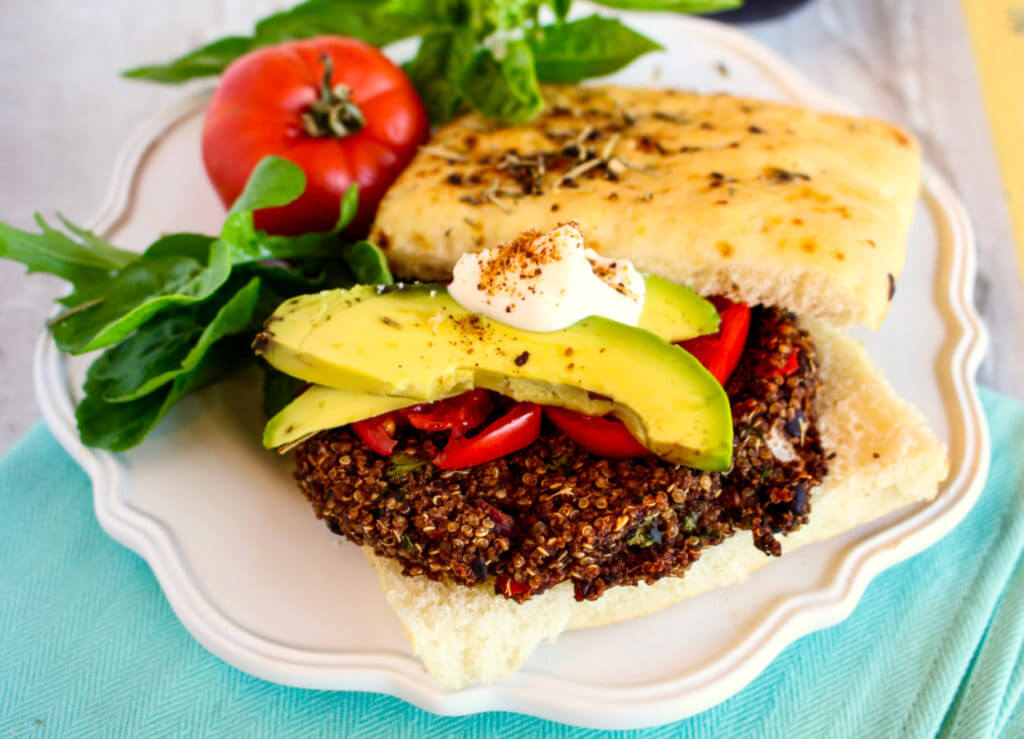
2. Give Veggie Burgers a Boost. There is perhaps no veggie burger as satisfying as one enhanced with nutritional yeast. Just 2 tiny tablespoons mixed into your favorite burger combinations of whole grains, beans, lentils, nuts, vegetables, spices, and herbs, will make everyone ask for your secret. It’s that good! If you really want to kick up your burger, use it in your special sauce—see #3.
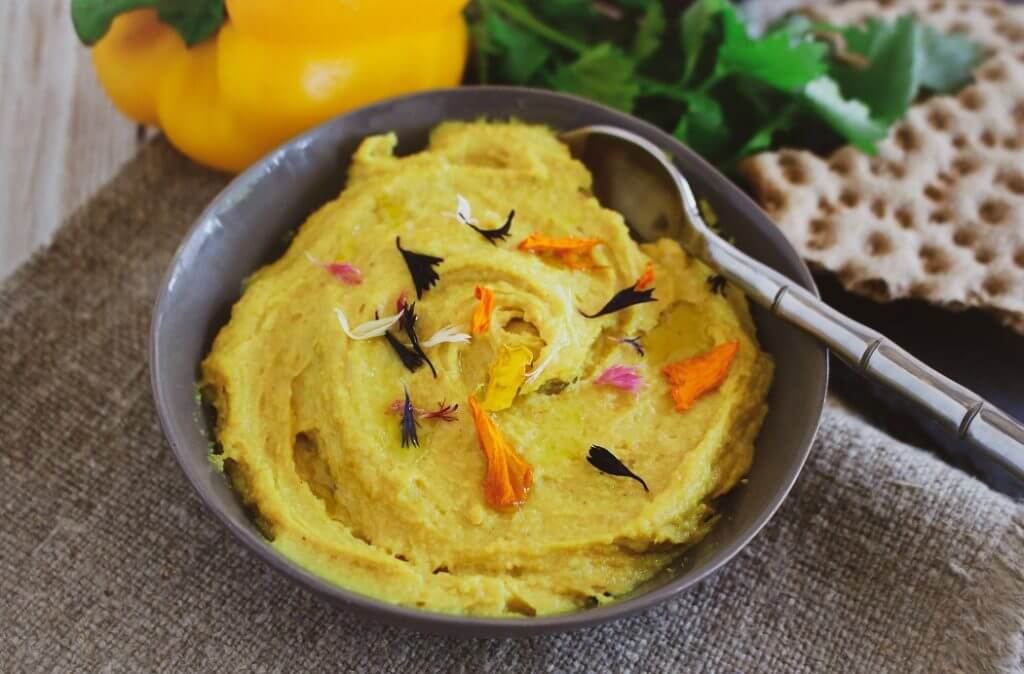
3. Get Saucy. Sauces, spreads, dips, and salad dressings can always use the savory nuance of nutritional yeast. It’s especially delicious stirred into hummus, pesto, “cheese” spreads, and goddess or plant-based Caesar salad dressings. Experiment with adding a little at a time, to taste, or simply switch out the cheese and be amazed!
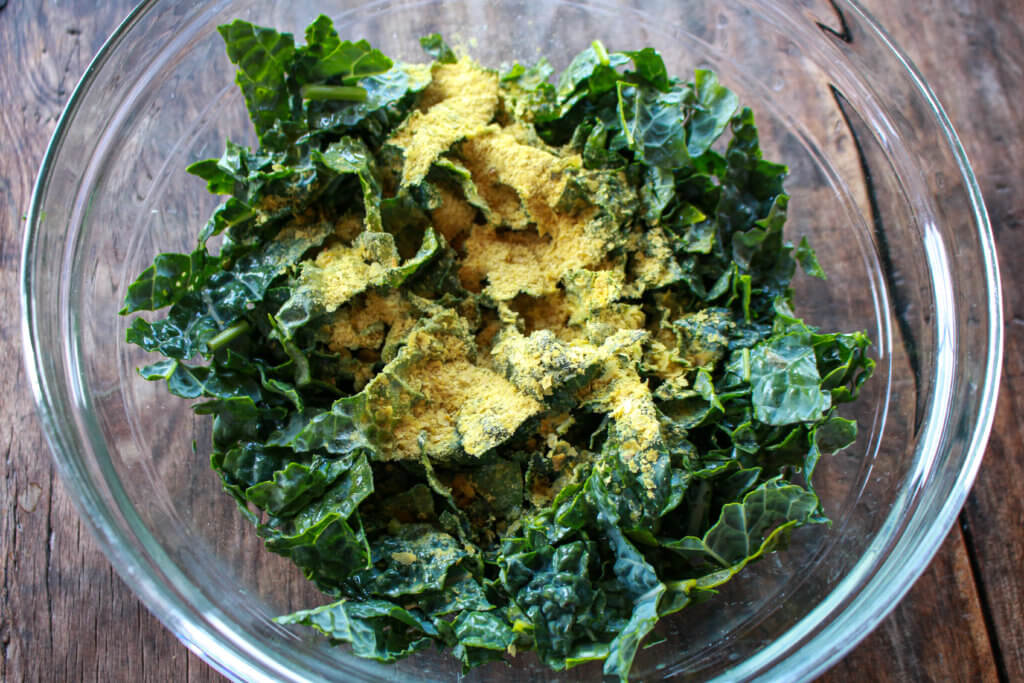
4. “Nooch” Up Veggies. Roasted veggies are pure bliss and wonderfully simple. All it takes is some cauliflower, Brussels sprouts, squash, carrots—or whatever you choose—cut to similar size and tossed with olive oil, nutritional yeast, salt to taste, pepper, and maybe a dash of pepper flakes or chili sauce on a baking sheet. Roast and splash with lemon juice or vinegar—balsamic is divine.

5. Slide it into Sides. Mix a couple tablespoons of “nooch” into your favorite side dishes and they take on a fresh flavor dimension everyone will love. Mashed potatoes, tofu scramble, rice and other whole grain side dishes and pastas are great ways to start.
Written by Sharon Palmer, MSFS, RDN with Brooke Ellis, dietetic intern.
Images by Sharon Palmer, MSFS, RDN
For other guides on how to use plant foods, check out:
Top 5 Ways to Use Tempeh
Top 5 Ways to Use Oats
Top 5 Ways to Use Persimmons
Top 5 Ways to Use Quinoa


